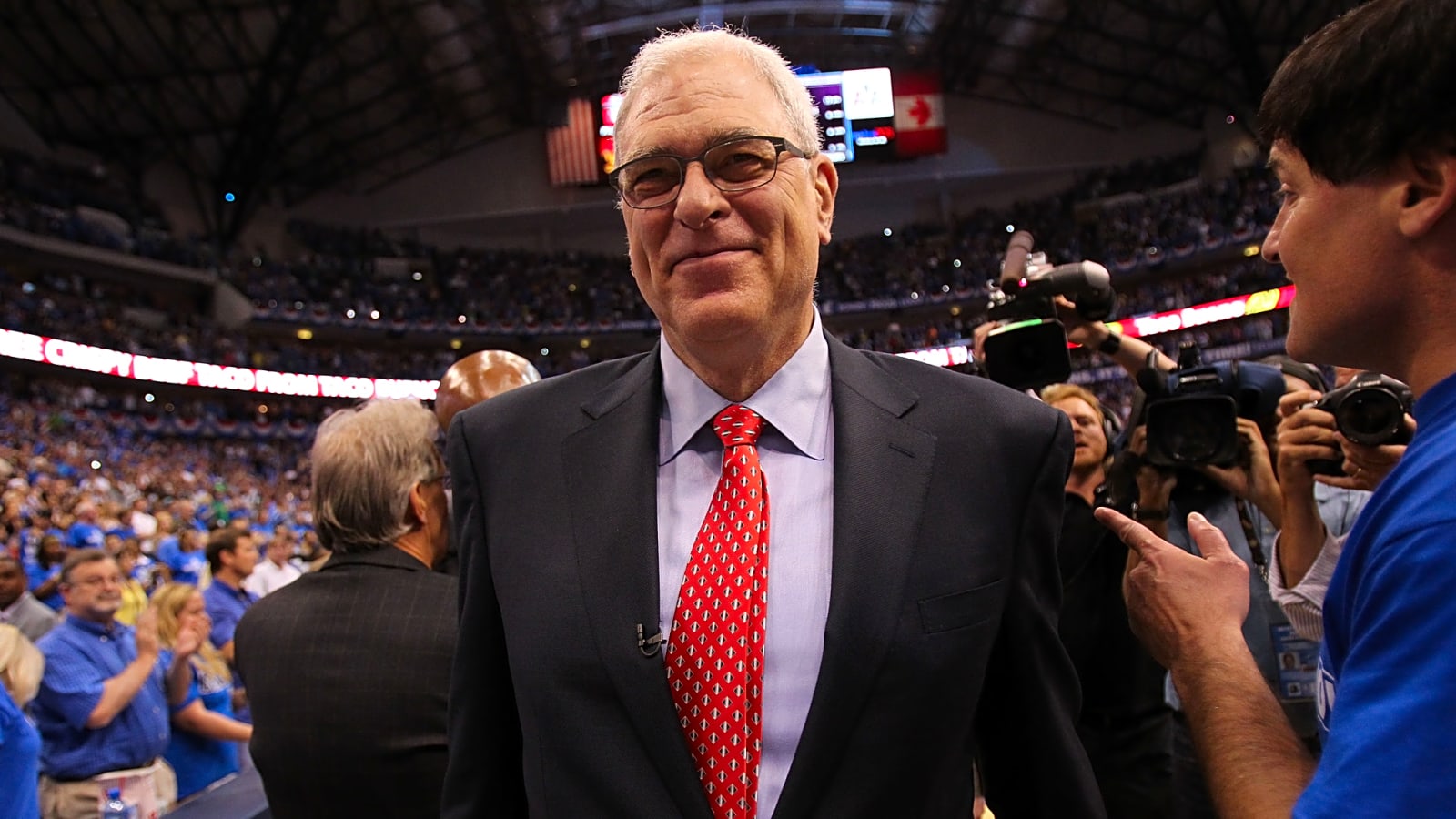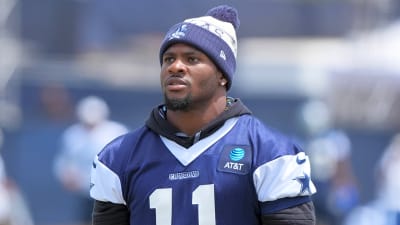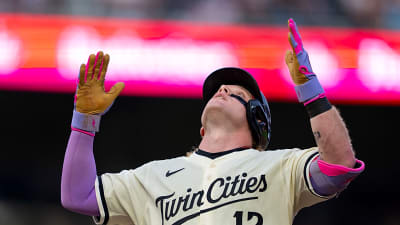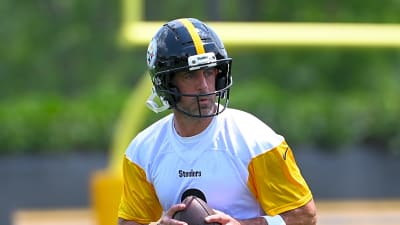
When it comes to the greatest basketball teams of all time, the Chicago Bulls of the 1990s are always in the conversation. Led by the iconic Michael Jordan and coached by Phil Jackson, these teams won six NBA championships in eight years.
One of the keys to their success was the Triangle Offense, a complex and effective offensive system that Jackson had fine-tuned over the years. In this article, we'll dive deep into the Triangle Offense, how it worked, and why it was so successful for Phil Jackson's teams.
Introduction To The Triangle Offense
The Triangle Offense is a strategic basketball system that has become synonymous with legendary coach Phil Jackson and his successful coaching stints with the Chicago Bulls and the Los Angeles Lakers. This innovative offensive system revolutionized the game of basketball and played a crucial role in the success of superstar players like Michael Jordan and Kobe Bryant.
This, most people know, but where did the Triangle Offense originate? The "equal opportunity offense", as Michael Jordan once called it, was developed by Sam Barry in the 1940s and further refined by Tex Winter in the 1960s.
Winter played basketball under Barry at USC and fell in love with Barry’s offense. Before joining the Chicago Bulls, Winter developed the Triangle Offense as head coach at Kansas State University and later in the NBA with the Houston Rockets.
After much success in college, Winter's special offense struggled in the NBA. As the Houston Rockets head coach, Winter collected just a 51-78 record in less than two seasons.
Winter joined the Chicago Bulls in 1985 as an assistant coach under head coach Stan Albeck. As an assistant, Winter attempted to get Albeck and, in the following three seasons, head coach Doug Collins to run the Triangle Offense, but these head coaches declined.
Phil Jackson took over as Chicago's head coach in the 1989-90 season. Jackson was on board with running Winter's offense, but their star player, Michael Jordan, was not.
Jeff Pearlman's book, "Three-Ring Circus," details how Phil Jackson convinced Michael Jordan to accept the offense during their time with the Chicago Bulls.
“He wanted the Bulls to be a free-flowing offensive machine, where defenders could no longer triumph simply by double-teaming the league’s best player. 'The important thing,' he told Jordan, 'is to let everybody touch the ball so they won’t feel like spectators.' You can’t beat a good defensive team with one man. It’s got to be a team effort,” Pearlman wrote.
The Triangle Offense revolutionized the way basketball was played. At its core, the Triangle Offense is a system designed to create spacing, ball movement, and player movement to generate high-percentage scoring opportunities.
Its name, which is also known as the Triple point offense, stems from the three-player positions forming a triangle on one side of the court. This offense allowed every player, even role players, to thrive.
The Triangle Helped Turn Michael Jordan Into A Champion
The Triangle Offense is a great offensive basketball system. Still, to truly succeed in it, you need a star player, something the Bulls certainly had. Michael Jordan was already a gifted scorer and playmaker, but he had faced criticism for being a solo performer who couldn't elevate his team to championship success.
Under Jackson and Winter's guidance and the implementation of the Triangle Offense, Jordan's game reached new heights. The system allowed Jordan to operate in different areas of the court, using his scoring ability to draw defenders and create openings for his teammates.
One of the key principles of the Triangle Offense was its adaptability. It could accommodate different types of players and skill sets, making it a perfect fit for the diverse talents of the Bulls roster.
Michael Jordan's success with the Chicago Bulls was not just due to his own talents but also the team's impressive system. Along with Jordan, players such as Scottie Pippen, Horace Grant, and later Dennis Rodman thrived within the system, forming a cohesive unit that was greater than the sum of its parts.
Players who would not normally make much of a difference in other systems, like John Paxson and Steve Kerr, became household names thanks to Jackson's new offense, which allowed them to get easy shots.
The Triangle Offense proved highly successful for the Chicago Bulls. From 1991 to 1993, they won three consecutive NBA championships and became the team to beat in the league.
The real test of the Triangle Offense's effectiveness was when Michael Jordan retired from the NBA before the 1993-94 season. Despite losing the greatest player in the game, the Bulls still managed to win 55 games, only two less than their previous season's total.
Although they couldn't win a fourth straight title, Chicago's achievement of running the Triangle Offense without Jordan deserves recognition. Of course, Jordan would return, and the Bulls would win three more championships.
The Triangle Offense's impact extended beyond the Bulls' dynasty. Phil Jackson would win five more championships with the Los Angeles Lakers, further solidifying his legacy as one of the greatest coaches in NBA history.
First, the system thrived when big man Shaquille O'Neal and Kobe Bryant ran it to perfection. Later, when Shaq left, Kobe truly stepped into the role once filled by Michael Jordan to lead his team to championships.
Initially, Kobe was not accepting of Jackson's system, just as Jordan pushed back against the Triangle when it was first introduced to the Bulls.
"The other day, I said to Kobe, 'What's the problem?'" Jackson said about Kobe in the 2000-01 season. "He said, 'The game's too boring for me. The offense is so simple. It doesn't display my talent.' I said, 'I realize that. But we're trying to win games with the least amount of things going wrong, the fewest injuries, the least fatigue.' He said, 'But it doesn't give me what I have to have for my game.'
"Kobe's having a hard time with the Triangle Offense this year. Not last year. Last year he could hardly wait to get to the spot on the floor where Michael Jordan had been. He wanted to be Michael. But it's a different team this year. We don't have a Scottie Pippen for him, the guy who allowed Michael to be Michael. That's the cross Kobe has to bear."
This was one negative aspect of the Triangle Offense. Many players don't have the patience or even care to learn this type of offense. Carmelo Anthony famously struggled to learn Jackson's offense when he took over as president of the New York Knicks in 2014.
Many people claimed Anthony didn't want to learn it, as he wanted to continue to play isolation basketball. However, Anthony claims there is a different reason why the Triangle Offense failed in New York.
"The game is getting faster," Anthony said. "Guys are getting quicker. Guys are jumping out of the gym. It's like, 'No, we can't slow it down when we got a fast break. We can't play in the two-guard front when we got Derrick Rose and Raymond Felton'—you can't do that.
"... Again, we start slowing the game down. That's where you see guys wasn't comfortable in that situation, and I was one of them."
The pace of play could be why Anthony and his Knicks teammates struggled to find success while running this offense. Still, the main reason was likely due to the fact New York's players weren't willing to put in the work to learn the Triangle.
This is another reason why Michael Jordan and Kobe Bryant won NBA championships while Carmelo Anthony did not. Patience and sacrifice are essential to success, and these two factors are integral to the Triangle Offense.
How To Run The Triangle
The Triangle Offense appears to be difficult to run. Not many teams have used it in the NBA's history, so there is some truth to it.
In reality, Tex Winter's offense is quite simple. The trouble teams have running it stems from the players. In the Triangle, all players must be on the same page, or it will fall apart.
This is the main reason you didn't see many teams using it. Thanks to the increased usage of the three-point shot, offense is almost non-existent in today's game. The Golden State Warriors, coached by former Chicago Bulls sharpshooter Steve Kerr, are the only team to sometimes run a variation of the Triangle.
Still, when the Triangle Offense is run correctly with every player doing their part, it's beautiful to watch. And it's proven to win NBA championships.
Here's a breakdown of the Triangle Offense.
- Players should maintain a distance of around 15-18 feet between each other.
- The offense is structured around two main formations: the "sideline triangle" on one side of the court and the "two-man game" on the weak side.
- The sideline triangle is made up of three players: a post player on the block, a player in the corner, and a player on the wing (this formation can be set up on either side of the court).
- On the weak side, the "two-man game" consists of a guard at the top and a player at the weakside elbow-extended area. It's usually recommended to have two players in the post and three players on the perimeter. However, players can switch positions if needed.
The Triangle Offense depends on players reacting to the defense. Therefore, Phil Jackson didn't have to call many plays since players responded to their opponents.
This simple fact made it difficult for opposing teams to stop the Triangle Offense. Additionally, teams can deploy multiple variations of the offense.
In the Triangle, the 1-4 set formation involves the ball handler, usually the point guard, starting at the top of the court above the three-point line. The other four players stand in a line across the free-throw line, with spacing between them, ranging from one side of the three-point line to the other.
There are several options for running this set in the Triangle. One possibility is for the center to set a back screen for the point guard, who can then attack the basket for an easy layup.
If the layup is cut off, the point guard initiates the Triangle, which presents many other scoring options. Another option to start the Triangle Offense would be in a 1-2-2 set.
In this opening, the ball handler, again, usually the point, brings the ball up while two players stand at the wings and two players near the low post blocks. The players can then start the Triangle to either work that side of the court or swing the ball to the weak side to play the two-man game.
These are just two variations of starting the Triangle Offense. The beauty is that the Triangle can be set up in many ways, and it can change depending on how the defense plays it.
In 2012, an article stated, "The Triangle Offense has been, pretty much irrefutably, the single most dominant offensive attack (in any major sport) of the past 20 years."
This statement is not incorrect. Teams running the Triangle Offense won 11 of 20 NBA championships from 1991 to 2010. It's easy to say these teams only won because they had players like Michael Jordan, Scottie Pippen, Shaquille O’Neal, and Kobe Bryant.
Still, these stars failed to win an NBA title before the Triangle Offense became their main system. Of the players mentioned above, only one player won an NBA championship without the Triangle Offense, and they only achieved it once (Shaq in 2006 with the Miami Heat).
After delving into the intricacies of the Triangle Offense, we have unveiled Phil Jackson's winning formula for Michael Jordan and the Chicago Bulls. This strategic approach not only revolutionized basketball but also led to unparalleled success on the court.
By understanding the principles behind this system, we gain insight into the teamwork, discipline, and adaptability required to achieve greatness. As we reflect on Jackson's coaching prowess and his star players' unparalleled skill, we can see how a robust system, along with incredible talent, can win many championships.
More must-reads:
- Bulls sign HC Billy Donovan to multiyear extension
- Nikola Jokic’s agent sparks LeBron James to Denver speculation with Instagram post
- The 'NBA Summer League MVPs' quiz
Breaking News
Trending News
Customize Your Newsletter
 +
+
Get the latest news and rumors, customized to your favorite sports and teams. Emailed daily. Always free!








